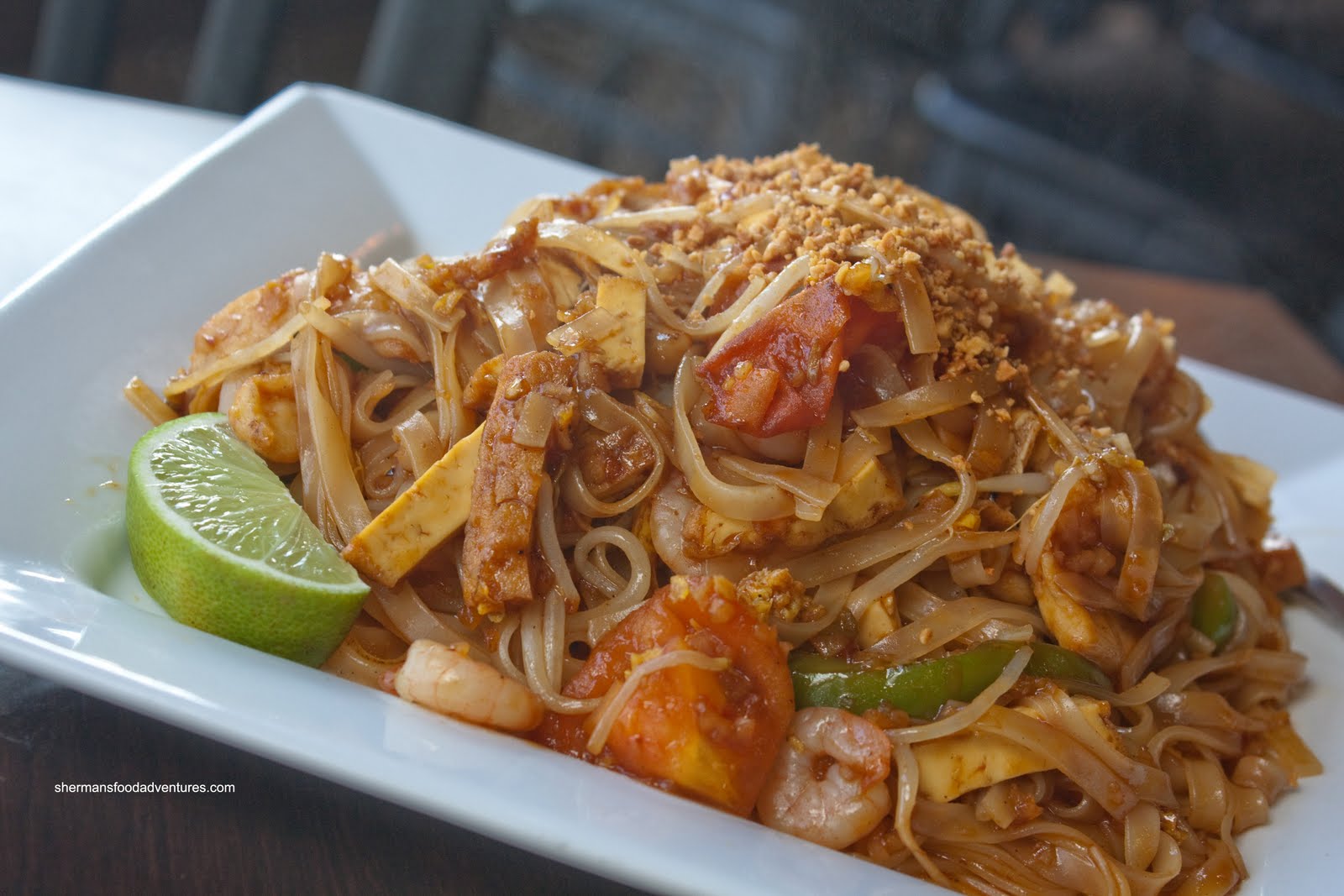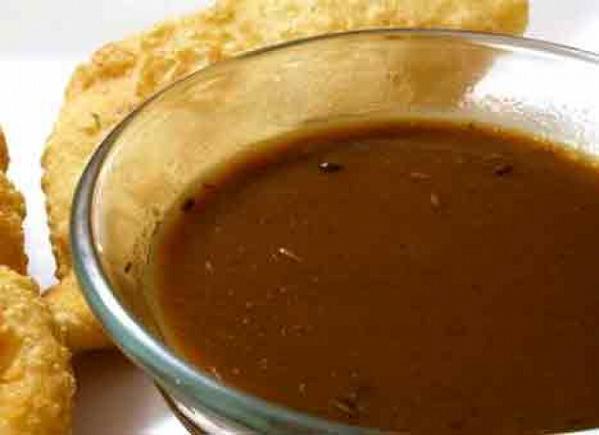- 1/3 cup tamarind pulp
- 1/3 cup fish sauce
- 1/3 cup palm sugar
- 2 tsp chili powder or paprika
- 300 g dry rice noodles
- 1/2 cup unsalted peanuts
- 6 tbsp vegetable oil
- 1 lb shrimp or prawns
- 2 clove garlic chopped
- 1 pkg tofu
- 2 red bell pepper chopped
- 2 eggs at room temperature
- 2 cup beansprouts
- 1/4 cup green onion chopped
- 4 slice lime
- Melt first three ingredients together in a small pot over a low flame.
- Taste and adjust the flavor balance until it suits you.
- Then add the chili powder, begin with just a teaspoon, and keep adding until it tastes the way you like it. It should lead with a salty flavour, followed by a mild sourness, then just a gentle sweetness and a soft caress from the chili at the back of your throat at the very end. If your sauce starts out super sweet now it will be very tough to correct later.
- By the time you're done flavouring the pot should be simmering happily.
- Cut the tofu block into three slabs, lay them between clean, dry cloths, and press under heavy books for 15-30 minutes, then chop into 1cm cubes.
- Soak the noodles in warm water for 15 minutes, then drain.
- Roast the peanuts at 300F for 15 minutes then coarsely crush them with a mortar and pestle.
- Peel and devein the shrimp.
- Heat a large seasoned** wok over high heat until very hot, to the point of smoke.
- Add a splash of oil, about 3 tablespoons.
- Add enough tofu for two portions and cook, turning occasionally, until it's browned on most sides.
- Add two portions' worth of red peppers and one clove's worth of the chopped garlic.
- Cook for another few minutes until the tofu is crisp and slightly brown at the edges and the peppers have softened.
- Add two portions' worth of noodles (about 4 loosely packed cups) and then about ⅓-½ cup of warm sauce.
- Stir vigorously, keeping everything moving in the wok, and cook the noodles until soft. Remember to break up the noodles and don't let them lump together. If the sauce evaporates too quickly and the noodles aren't quite ready, sprinkle a bit of water and keep stirring. Add a bit of oil if the noodles still stubbornly stick together.
- While the noodles are cooking, beat an egg.
- When the noodles are ready (taste to be sure), push them up to one side of the wok and pour the egg into the middle. Let it set for 10-15 seconds then toss everything all together.
- Push everything up to the side of the wok and add half a pound of shrimp into the middle, cooking until the shrimp have turned pink and have curled up slightly.
- When the shrimp are done (shouldn't take more than a minute or two), toss the shrimp together with the noodles then add two portions' worth of bean sprouts (if using). Keep things moving. Add more sauce if it looks a little pale.
- After the beansprouts have cooked for a minute, add a handful of ground peanuts and a handful of green onions. Turn the heat off, and quickly give the wok a good stirring to mix everything together.
- Split the finished Pad Thai between two plates and serve with slices of lime on the side. Give the empty wok a quick rinse with warm water, wipe off any excess bits of food with a warm towel, then put the wok back on the heat.
- As soon as it heats back up to a smoking point, you're ready to make the final two portions.
http://chezpim.com/cook/pad_thai_for_beginners
*About tamarind pulp:
If you buy block tamarind, soak the block in 4 cups of hot water in a
large bowl. Mesh the tamarind and water together and let sit until the
water cool down enough not to burn your hands. Stick your hands into the
bowl and work the tamarind and water together until the consistency is a
bit looser than room-temperature ketchup. Add more warm water if needed.
Strain the mixture to remove the pits and tough membranes from the
tamarind pulp. The consistency will be thick enough that you'll need to
press it through the strainer. Freeze any pulp you don't intend to use
right away.
**Seasoning the wok:
Add to your wok one cup of oil -- make sure you brush the oil over all
the inside surface of the wok -- and heat the wok until it is smoking.
Tilt the pan around to keep lubricating the surface with oil and let it
continue to smoke for a few minutes -- make sure your smoke vent is
running and all the windows are open, by the way. Then, take the pan off
the heat and dispose of the oil. Pour half a cup of kosher salt into the
wok and, with a kitchen rag, rub the salt all over the inside surface of
the wok. Throw out the salt, wipe the wok clean with a damp towel. Pour
a small amount of oil into a paper towel and wipe the oil all over the
inside surface again.


